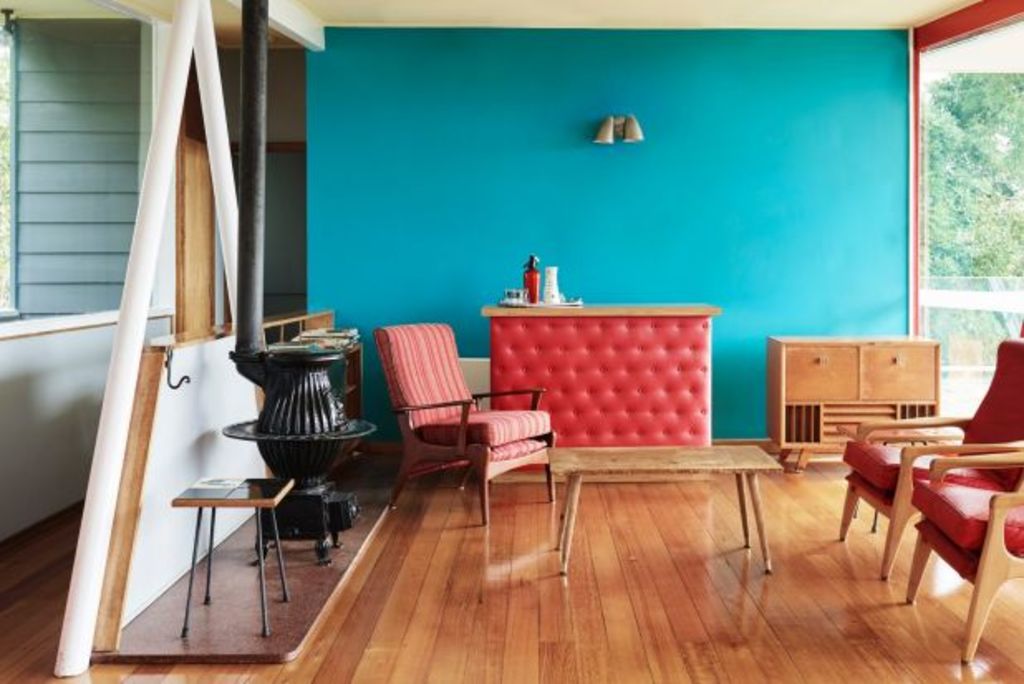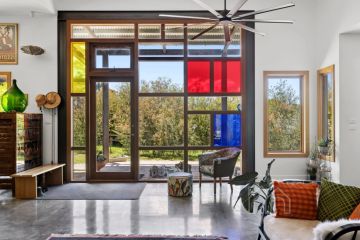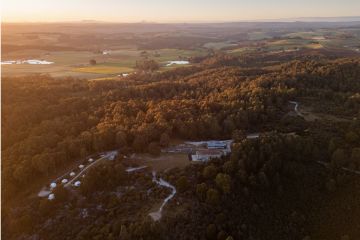The Design Files: A 'way out idea' becomes a distinctive architectural landmark

Who: The McCraith House
Where: Dromana, Vic.
What: Mid-century marvel
The McCraith House on Victoria’s Mornington Peninsula is one of the area’s most distinctive architectural landmarks, affectionately known by locals as the Butterfly House. It was commissioned by Gerald and Nell McCraith and designed by modernist masters Chancellor and Patrick in 1955.
Gerald McCraith was no ordinary client. The story goes that after some consideration, young architect David Chancellor told his client: “I’ve come up with some ideas, but you might think they are too ‘way out’,” to which McCraith replied: “What makes you think I don’t want ‘way out’!?”
Artist and jeweller Bin Dixon-Ward, granddaughter of Gerald and Nell McCraith, recalls childhood memories of her grandparents and their unique holiday house.
“In the 1940s my grandparents enjoyed weekend drives to the peninsula from their home in Essendon,” Dixon-Ward says. “In the early 1950s when pa’s business was going well, they bought a bush block on the slopes of Arthurs Seat. They met a young architect and asked him to design a holiday house.”
Once the house was built, it was named Larrakeyah, after the Darwin army base where McCraith was stationed during World War II.
- Related: Inside a 1970s-style family home
- Related: Victorian farmhouse turned yoga studio
- Related: A farmhouse retreat in the Macedon Ranges
Dixon-Ward describes McCraith as being creative in the broadest sense. “He was able to turn his hand to anything,” she says. His main interest was breeding Australian native orchids and he was made an officer of the Order of Australia in 1993 for services to horticulture.
McCraith lived to the age of 100. He died in 2009 and his last overseas trip, at the age of 93, was to Malaysia and Borneo.
Though its distinctive top-heavy design makes the Butterfly House a unique design and engineering feat inside, it’s surprisingly modest.
With just one bedroom and a tiny bathroom adjoining the main living area, this is a humble home, even by 1950s standards. Downstairs, in the narrow base of the building the second bedroom is lined with sixin-built bunk beds.
In 2013, the McCraith House was given to RMIT University, and now serves as accommodation for RMIT’s writer-in-residence program.
“It is rewarding to know that the house is able to nurture an artist’s creative practice, and is available for design and architecture scholars to study,” Dixon-Ward says.
As a jeweller and lecturer in gold and silversmithing, Dixon-Ward’s work has also been influenced by the property. “My work is influenced by geometry of the built environment,” she says. “I’m interested in how such simple shapes can be the basis of such satisfying spaces.”
The Design Files guide to defining an icon
What makes a house iconic? It is uniquely indicative of the era in which it was built. These homes are not necessarily grand mansions or masterpieces, but could be any unique building that documents a specific point in time.
Comedian, presenter and mid-century design enthusiast Tim Ross says an iconic house is one which “captures people’s imaginations constantly over a long period of time”.
Above all, iconic architecture is about more than just aesthetics – these buildings say so much about us, and are a legacy worth protecting.
We recommend
States
Capital Cities
Capital Cities - Rentals
Popular Areas
Allhomes
More
- © 2025, CoStar Group Inc.






